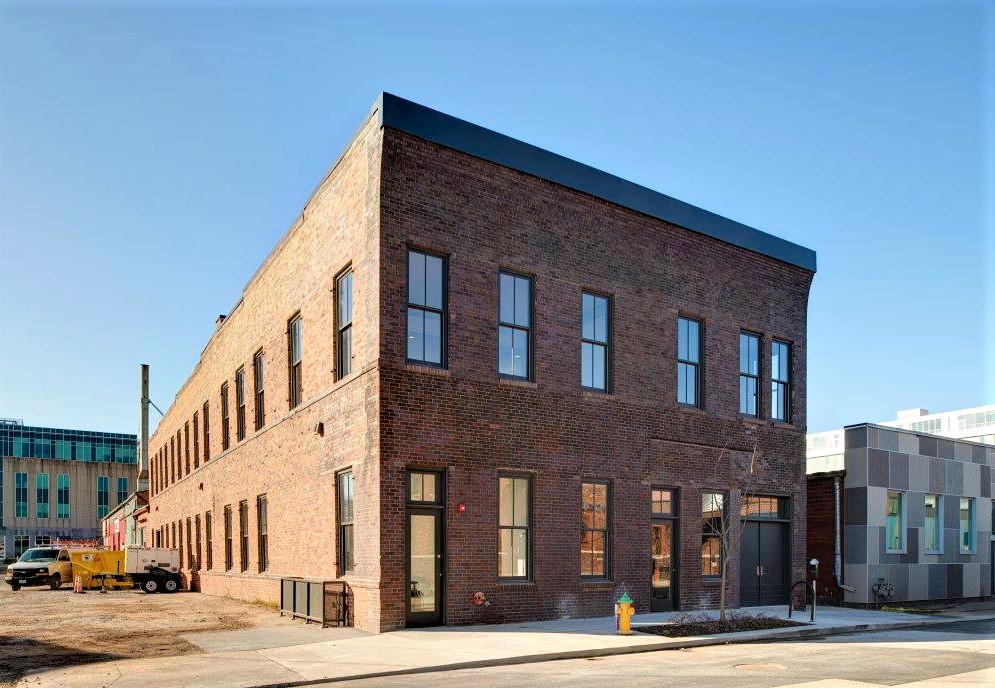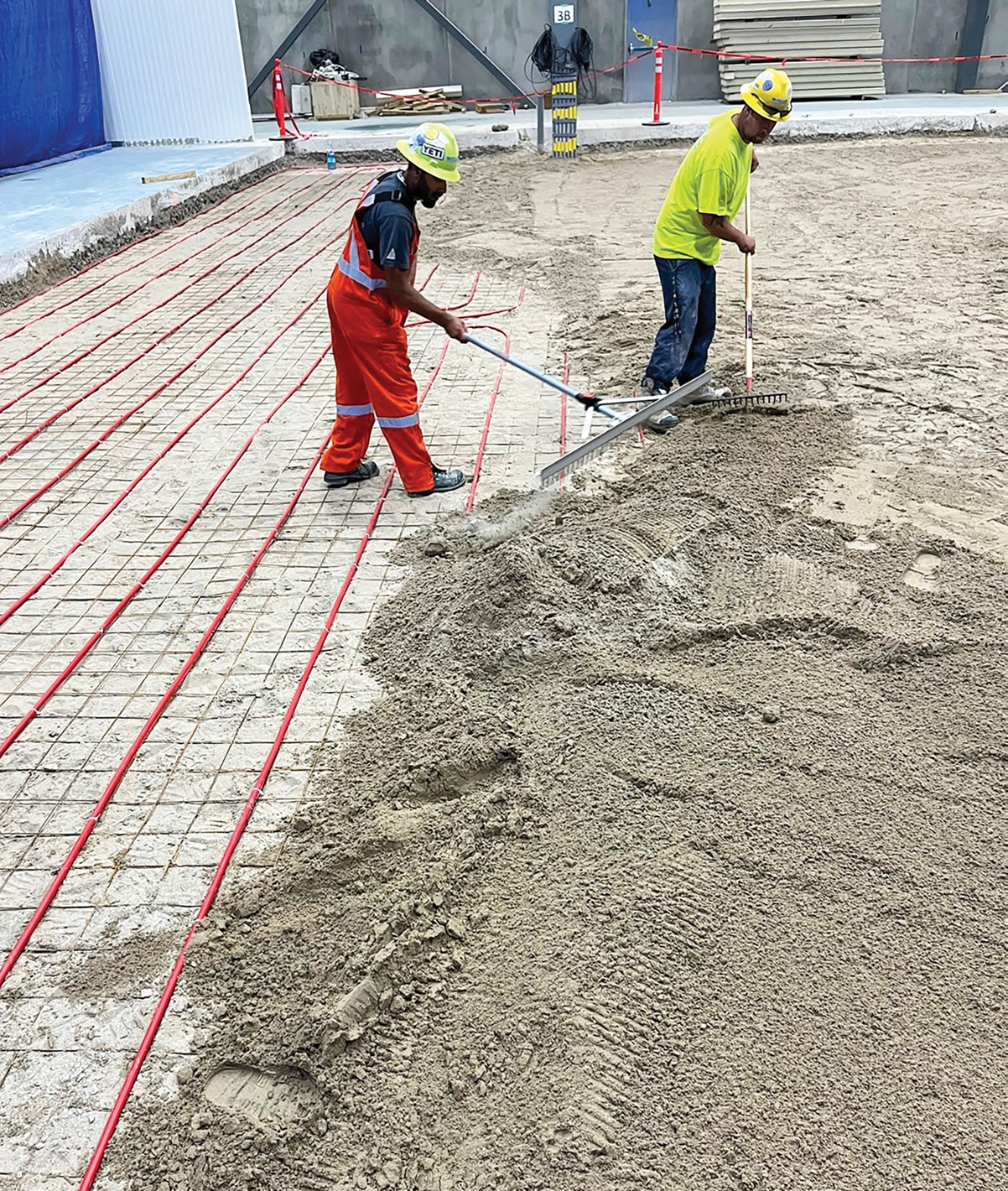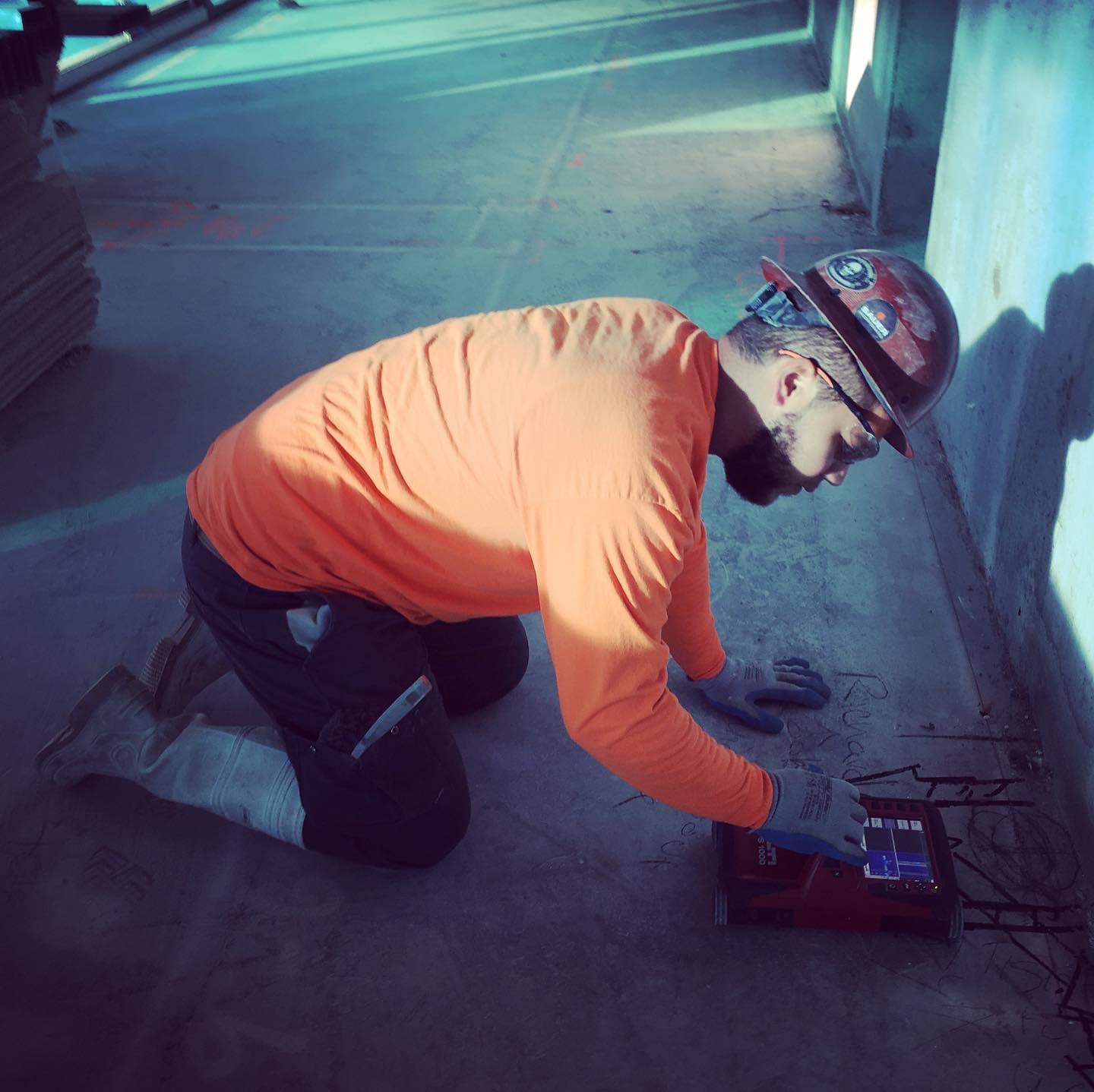
Women in Concrete: A Historic Renovation 100 Years in the Making

The 1909 masonry two-story Pitt Carriage Factory Building is located in the East Des Moines Industrial Historic District and has a unique and admirable history. The location donned the first woman-owned carriage works factory in the U.S. in 1910, ten years before women even had the right to vote. Along with its historical significance, the interior features exposed materials like brick walls, wood ceilings and concrete flooring. It has a clean open design and was built with numerous windows for natural light and ventilation.

The front of the Pitt Carriage Factory Building in Des Moines.
The building had been recently gutted in a prior failed project under former ownership. The windows, wood flooring, stairs and freight elevator were all removed. The new owners were determined to succeed where previous owners had failed. So, their transformation vision included rehabilitating historical elements of the building while also implementing new modern renovations into the overall design as well. The new owners had two primary end goals: first was to return the property to commercial use by offering retail and office space when the project was completed. Second was to qualify the structure for state and federal historic tax credits. To qualify, they would need to comply with guidelines detailed by the U.S. Secretary of the Interior’s Standards for Rehabilitation. This meant retaining multiple original design elements of the building, including the historic concrete floors.
The general contractor for this renovation project, Hildreth Construction, contracted CSDA member Royale Concrete to salvage and restore the existing concrete flooring. The job presented a few challenges from the beginning, including 623 linear feet of cracks and joints that needed filling. Careful to follow the standards for rehabilitation, Royale operators mixed and compared samples of concrete to find the best color match for repairs. Once a color was chosen, Royale used a Polyurea joint filler pump to fill in the imperfections and restore the floor to an even and balanced state. The flooring also had several areas with extreme elevation changes from 1 inch to 1 1/2 inches. Royale used a ShaveMaster concrete planer to skillfully level and smooth out the surface, polishing it to a level 3 polish class C medium aggregate. Dust removal and cleanup were managed with a HEPA modified Husqvarna DC 5500 vacuum throughout the duration of the job.

Cracks and unevenness in concrete before project.
Additionally, some parts of the flooring were found to have embedded metal. Royale used a Husqvarna PG 820 grinder to work around these troublesome areas to ensure a thorough and accurate restoration. The concrete was quite porous and soft, so the need for a grout coat was crucial to achieve the desired final product. Royale grouted and densified the 3,700 square feet of floor before honing and polishing with transitional and resin tools. Finally, all 400 linear feet of the edges were hand polished for a precise and smooth outcome.
The project followed the U.S. Secretary of the Interior’s Standards for Rehabilitation to the tee and the building retains the original masonry envelope, existing service doors, window openings, roof structure and of course the historic interior concrete flooring. Royale’s part of the project was completed on time and on budget.
The President and owner of Royale, Jessica Ledger-Kalen, explained, “When originally selected for the project, I wasn’t aware of the building’s historical details. After finding out that the building at one time housed a woman-owned carriage manufacturer, I was impressed.” That woman was Mabel Pitt, who became the manager of the Pitt-Matthews Carriage Company after her father passed away in 1910. She was just 28 years old at the time. The Pitt-Matthews Carriage Company became the only known woman-owned and operated carriage works factory in the United States. Ledger-Kalen expressed her respect for Mabel explaining, “I was 26 years old when I founded Royale Concrete. Most of all, I appreciated Mabel’s comment after assuming management, ‘I can’t see any reason why a woman can’t make as big a success in business as any man. It just takes work-that’s all.’”

Result after concrete polishing was completed on the 3,700 square feet of floor.
The Pitt Carriage Factory Building was able to retain its original concrete floors thanks to concrete polishing. Contracting CSDA members like Royale Concrete allow for the preservation of historic architecture that would otherwise be lost with alternative methods like demolishing and re-pouring. Building renovations like these are quickly transforming the East Des Moines Industrial Historic District into a thriving commercial area. The owner is in the process of adding the property to the National Register of Historic Places.
The National Park Service, which administers the federal historic tax credit program, defines a rehabilitation project thusly: “Rehabilitation is defined as the act or process of making possible a compatible use for a property through repair, alterations and additions while preserving those portions or features which convey its historical, cultural or architectural values. The Rehabilitation Standards acknowledge the need to alter or add to a historic building to meet continuing or new uses while retaining the building’s historic character.”
CSDA Cutting Contractor
Royale Concrete
Fairfield, Iowa, USA
Tel: 888-568-6001
Email: an@royaleconcrete.com
Website: https://royaleconcrete.com/
Methods Used
Concrete polishing
General Contractor
Hildreth Construction
Des Moines, Iowa
Tel: 515-971-0124
Email: Mark@HildrethConstruction.com
Website: www.hildrethconstruction.com














